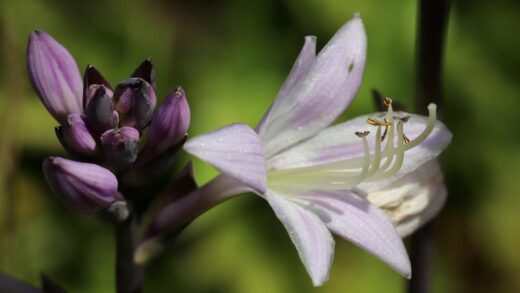Caring for arugula

Arugula, a peppery, vibrant green, is a rewarding addition to any garden, prized for its rapid growth and distinctive flavor. Successful cultivation hinges on understanding its fundamental needs, which are relatively simple but crucial for a bountiful and continuous harvest. Providing the right conditions from the outset ensures healthy, vigorous plants that are less susceptible to pests and diseases. This includes careful consideration of soil composition, light exposure, and watering schedules, all of which play a pivotal role in the development of its tender, flavorful leaves. By mastering these basic care principles, gardeners can enjoy fresh arugula from early spring through late autumn.
Proper care begins well before the first seed is sown, with the preparation of the garden bed. Arugula thrives in well-drained soil that is rich in organic matter, as this provides the necessary nutrients for quick growth. Amending the soil with compost or well-rotted manure before planting enriches it, improving both its texture and fertility. The ideal soil pH for arugula is between 6.0 and 7.0, so conducting a soil test can be a beneficial step for making precise adjustments. This initial investment in soil health pays dividends throughout the growing season, leading to more productive plants.
Maintaining consistent soil moisture is another cornerstone of arugula care, as irregular watering can lead to stress, which in turn can cause the plant to bolt prematurely. Bolting is the process where the plant sends up a flower stalk, and once this occurs, the leaves often become bitter and less palatable. A steady supply of water keeps the leaves succulent and mild in flavor. The goal is to keep the soil consistently moist but not waterlogged, as overly wet conditions can promote root rot and other fungal diseases.
Finally, effective arugula care involves a proactive approach to harvesting. Regularly cutting the outer leaves encourages the plant to produce new growth from the center, extending the harvest period significantly. This “cut-and-come-again” method not only provides a steady supply of fresh greens but also helps to keep the plant compact and productive. Delaying harvesting can result in oversized, tough, and overly pungent leaves, so timely picking is essential for enjoying arugula at its peak quality.
Soil and site selection
Choosing the right location is paramount for growing high-quality arugula, as this plant has specific preferences for its environment. The ideal site receives ample morning sun but is protected from the intense heat of the afternoon, especially in warmer climates. This partial shade helps prevent the soil from drying out too quickly and reduces the likelihood of the plant bolting during hot weather. Planting arugula in a location where it can benefit from the shade of taller plants, such as tomatoes or corn, can be an effective strategy for providing this necessary protection from the midday sun.
More articles on this topic
The quality of the soil is just as important as the location itself. Arugula performs best in loose, fertile soil that allows for good drainage, preventing water from pooling around the roots. Heavy clay soils should be amended with organic materials like compost, peat moss, or coconut coir to improve their structure and aeration. Conversely, very sandy soils may need enrichment with compost to enhance their water-retention capabilities. The aim is to create a balanced medium that holds moisture without becoming saturated, providing a perfect environment for root development.
Preparing the garden bed is a critical step that should not be overlooked. Before planting, the soil should be tilled or worked to a depth of at least 20-25 centimeters to loosen any compaction. This process allows the arugula’s taproot to penetrate deeply and access water and nutrients more effectively. During this preparation, it is also the perfect time to incorporate a balanced, slow-release organic fertilizer to provide a steady source of nutrition for the young plants as they establish themselves.
Furthermore, consider the principles of crop rotation when selecting a site for your arugula. Avoid planting it in a location where other brassicas, such as broccoli, cabbage, or kale, were grown in the previous season. This practice helps to prevent the buildup of soil-borne diseases and pests that are specific to the brassica family. By rotating crops, you disrupt the life cycles of these pathogens and insects, promoting a healthier garden ecosystem and reducing the need for chemical interventions.
Climate and temperature requirements
Arugula is a cool-season crop, meaning it grows best in the moderate temperatures of spring and autumn. The optimal temperature range for its growth is between 10°C and 18°C. In this temperature window, the plant focuses its energy on producing lush, tender leaves with the characteristic peppery flavor it is known for. As temperatures rise above this range, especially exceeding 24°C, the plant is triggered to enter its reproductive phase, a process known as bolting. This results in the production of a flower stalk and a significant decline in the quality and taste of the leaves.
More articles on this topic
Understanding this temperature sensitivity is key to successful season extension. Gardeners in cooler climates can often grow arugula throughout the summer, whereas those in hotter regions will achieve the best results by planting in early spring and again in late summer for an autumn harvest. Planting can be timed so that the main growth period avoids the peak heat of mid-summer. Utilizing shade cloth or planting in a location with afternoon shade can help mitigate the effects of unexpected heatwaves and prolong the harvesting period.
Frost tolerance is another important climatic factor to consider. Young arugula plants are quite hardy and can withstand light frosts, which can even enhance the sweetness of the leaves. This characteristic makes it an excellent candidate for early spring planting, as it can be sown several weeks before the last expected frost date. However, a hard freeze can damage or kill the plants, so in regions with severe winters, protection such as a cold frame or low tunnel is necessary for overwintering or very early spring crops.
Ultimately, managing the growing environment to align with arugula’s preferred climate is crucial. This may involve using tools like floating row covers in early spring to warm the soil and protect against late frosts. In the autumn, these same covers can protect the plants from early hard freezes, extending the harvest well into the cooler months. By paying close attention to temperature and providing protection when needed, gardeners can maximize their arugula yield and enjoy its fresh flavor for a much longer season.
Sunlight exposure
The amount of sunlight arugula receives directly impacts its growth rate and leaf quality. For optimal development, arugula requires at least six hours of direct sunlight per day. This amount of light fuels the process of photosynthesis, enabling the plant to produce the energy it needs for vigorous, healthy growth. In the cooler temperatures of spring and fall, full sun exposure is generally beneficial, promoting rapid leaf production and a well-developed root system. The plants will be stocky, lush, and develop a robust flavor profile.
However, the intensity of sunlight is a critical variable, particularly as the seasons change and temperatures rise. In hot climates or during the peak of summer, intense, direct afternoon sun can be detrimental to arugula. The combination of high light intensity and heat can stress the plant, causing the leaves to become tough and excessively bitter. More importantly, it is a primary trigger for premature bolting, which effectively ends the productive life of the plant for culinary purposes.
To strike the right balance, providing partial shade during the hottest part of the day is an effective strategy. This can be achieved by planting arugula in a location that receives morning sun and afternoon shade, or by using shade cloth that filters a percentage of the sunlight. A 30-40% shade cloth can significantly lower the ambient temperature around the plants and reduce light intensity, helping to prolong the harvest season. This technique is especially useful for gardeners looking to grow arugula through the warmer months.
When grown indoors or in low-light conditions, arugula may become leggy, with long, thin stems and smaller leaves as it stretches to find more light. The flavor of shade-grown arugula is often milder, which may be preferable for some palates. However, for the best overall results in terms of both yield and flavor, aiming for the sweet spot of ample morning sun followed by some protection from harsh afternoon rays will produce the most desirable crop.
Watering and moisture control
Consistent and adequate watering is one of the most critical aspects of caring for arugula. The plant’s rapid growth cycle demands a steady supply of moisture to support the development of its succulent leaves. Irregular watering is a major stressor that can lead to a host of problems, most notably a bitter flavor and premature bolting. When the soil is allowed to dry out completely, the plant’s defense mechanisms are triggered, leading it to focus on seed production rather than leaf growth. This is a survival response that gardeners must manage carefully to ensure a long and flavorful harvest.
The best practice for watering arugula is to maintain evenly moist soil throughout the growing season. This does not mean the ground should be saturated or waterlogged, as this can lead to root rot and other fungal issues. A good rule of thumb is to check the top inch of soil; if it feels dry to the touch, it is time to water. Typically, arugula requires about 2.5 centimeters of water per week, either from rainfall or irrigation. In sandy soils or during particularly hot and windy weather, more frequent watering may be necessary to compensate for faster evaporation.
The method of watering also plays a role in the plant’s health. It is best to water arugula at the base of the plant, directly onto the soil, rather than overhead. Using a soaker hose or drip irrigation system is ideal as it delivers water efficiently to the root zone while keeping the leaves dry. Wet foliage, especially in humid conditions or overnight, can create a favorable environment for fungal diseases like downy mildew and powdery mildew to take hold. If using a watering can or hose, do so in the morning to allow the leaves plenty of time to dry before evening.
Proper moisture control also involves the soil’s ability to retain water. Amending the soil with organic matter such as compost not only provides nutrients but also significantly improves its water-holding capacity. A layer of organic mulch, such as straw, shredded leaves, or grass clippings, can be applied around the base of the plants. This mulch layer helps to conserve soil moisture by reducing evaporation, suppresses weed growth, and helps to keep the soil temperature cool, all of which contribute to a healthier, more productive arugula patch.
Harvesting for continuous growth
Harvesting arugula correctly is a key technique for ensuring a long and continuous supply of fresh leaves from the same plants. The principle behind this is the “cut-and-come-again” method, which encourages the plant to regenerate and produce new foliage. This process can begin as soon as the outer leaves reach a usable size, typically around 5-7 centimeters in length. By focusing on harvesting these mature outer leaves, the central growing point of the plant remains intact and undisturbed, allowing it to continue pushing out new growth.
To execute this method, use a pair of clean, sharp scissors or simply pinch the leaves off with your fingers at the base of the stem. It is important to harvest from the outside of the plant, working your way around and leaving the smaller, inner leaves to develop further. This selective harvesting not only provides you with the most tender leaves for consumption but also improves air circulation around the center of the plant, which can help to reduce the risk of fungal diseases. Regular harvesting, perhaps every few days, keeps the plant in a state of active growth.
The timing of the harvest can also influence the flavor and quality of the leaves. Arugula is best harvested in the cool of the morning, after the dew has dried but before the sun becomes intense. At this time, the leaves are fully hydrated, crisp, and at their peak flavor. Harvesting during the heat of the day can result in leaves that are slightly wilted and may have a more pungent, almost bitter taste due to the plant’s natural response to heat stress.
As the season progresses, it is important to monitor the plants for any signs of bolting, which is the formation of a flower stalk from the center of the plant. Once this process begins, the plant’s energy is diverted towards flower and seed production, and the leaves will develop a much stronger, more bitter flavor. While the flowers themselves are edible and have a mild, peppery taste, it is best to harvest the entire plant at the first sign of a flower stalk to salvage the remaining leaves before their quality declines significantly.
Common challenges and solutions
Even with diligent care, gardeners may encounter several common challenges when growing arugula. One of the most frequent issues is the premature bolting of the plants, especially as temperatures begin to rise. Bolting is a natural part of the plant’s life cycle, triggered by stressors like heat and inconsistent watering, but it marks the end of a quality leaf harvest. To combat this, plant arugula early in the spring or in the fall to ensure it matures during cooler weather. Additionally, providing afternoon shade and maintaining consistent soil moisture are crucial preventative measures.
Pest infestations can also be a significant problem, with flea beetles being one of the most common culprits. These tiny, black insects chew small, “shot-hole” patterns in the leaves, which can be unsightly and, in severe cases, can stunt the plant’s growth. To manage flea beetles, using a floating row cover from the moment of planting is a highly effective physical barrier. These lightweight fabric covers prevent the beetles from reaching the plants while still allowing light, air, and water to penetrate. Regular monitoring and keeping the garden free of weeds can also reduce pest populations.
Fungal diseases, such as downy mildew and powdery mildew, can affect arugula, particularly in damp or humid conditions with poor air circulation. Downy mildew appears as yellow spots on the upper surface of leaves with fuzzy greyish mold on the undersides, while powdery mildew presents as a white, powdery coating. To prevent these diseases, ensure proper spacing between plants to promote good airflow. Water at the base of the plants in the morning to allow foliage to dry quickly, and remove any affected leaves immediately to prevent the spread of spores.
Nutrient deficiencies can sometimes present a challenge, although arugula’s needs are relatively modest. Yellowing leaves can be a sign of a nitrogen deficiency, which can be remedied by applying a nitrogen-rich organic fertilizer, such as a fish emulsion or a compost tea. However, it is important not to over-fertilize, as an excess of nitrogen can lead to overly rapid, weak growth that is more susceptible to pests and diseases. A pre-planting application of compost is often sufficient to carry the plants through their relatively short growing cycle.
📷 Flickr / Szerző: Maja Dumat / Licence: CC BY 2.0

















